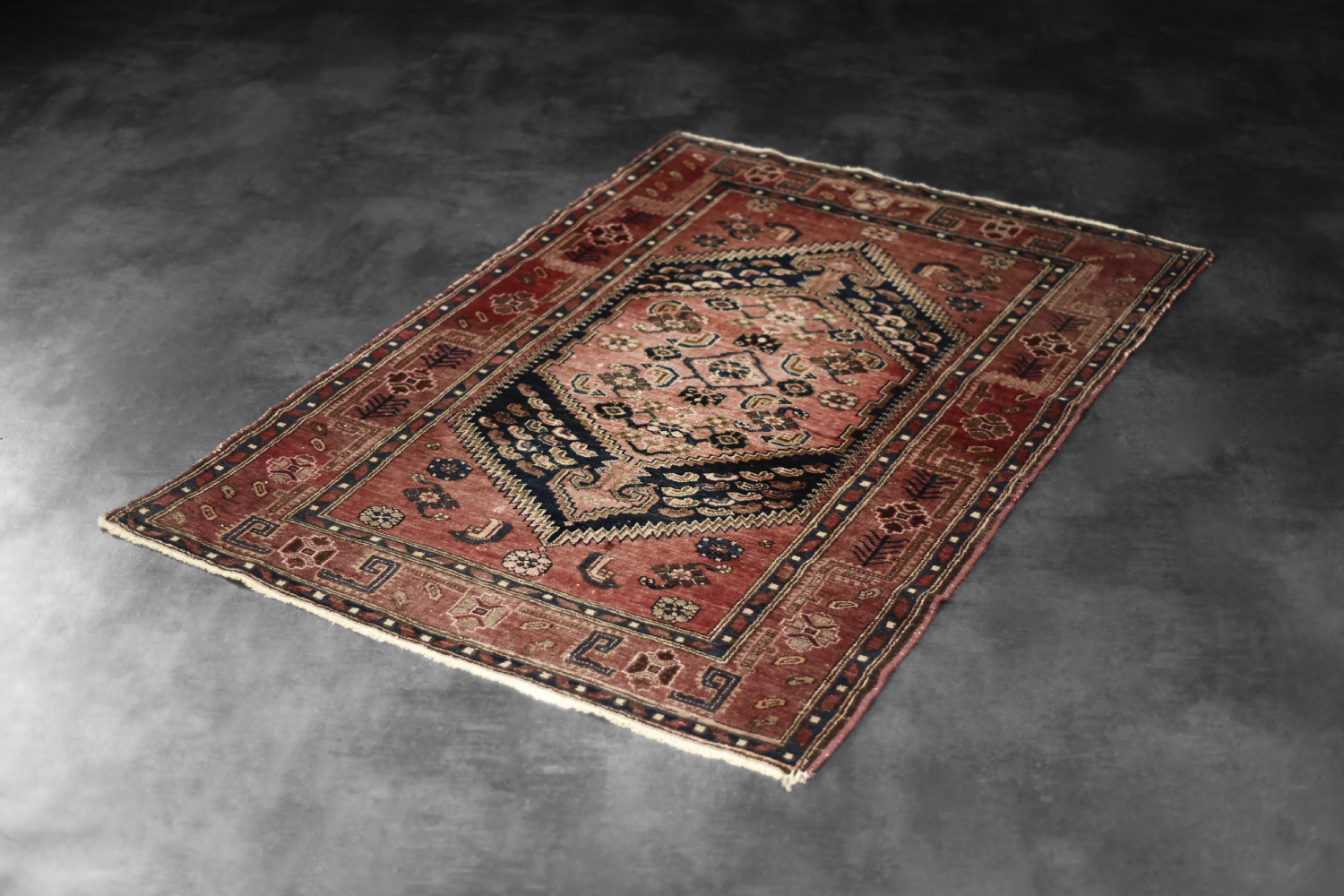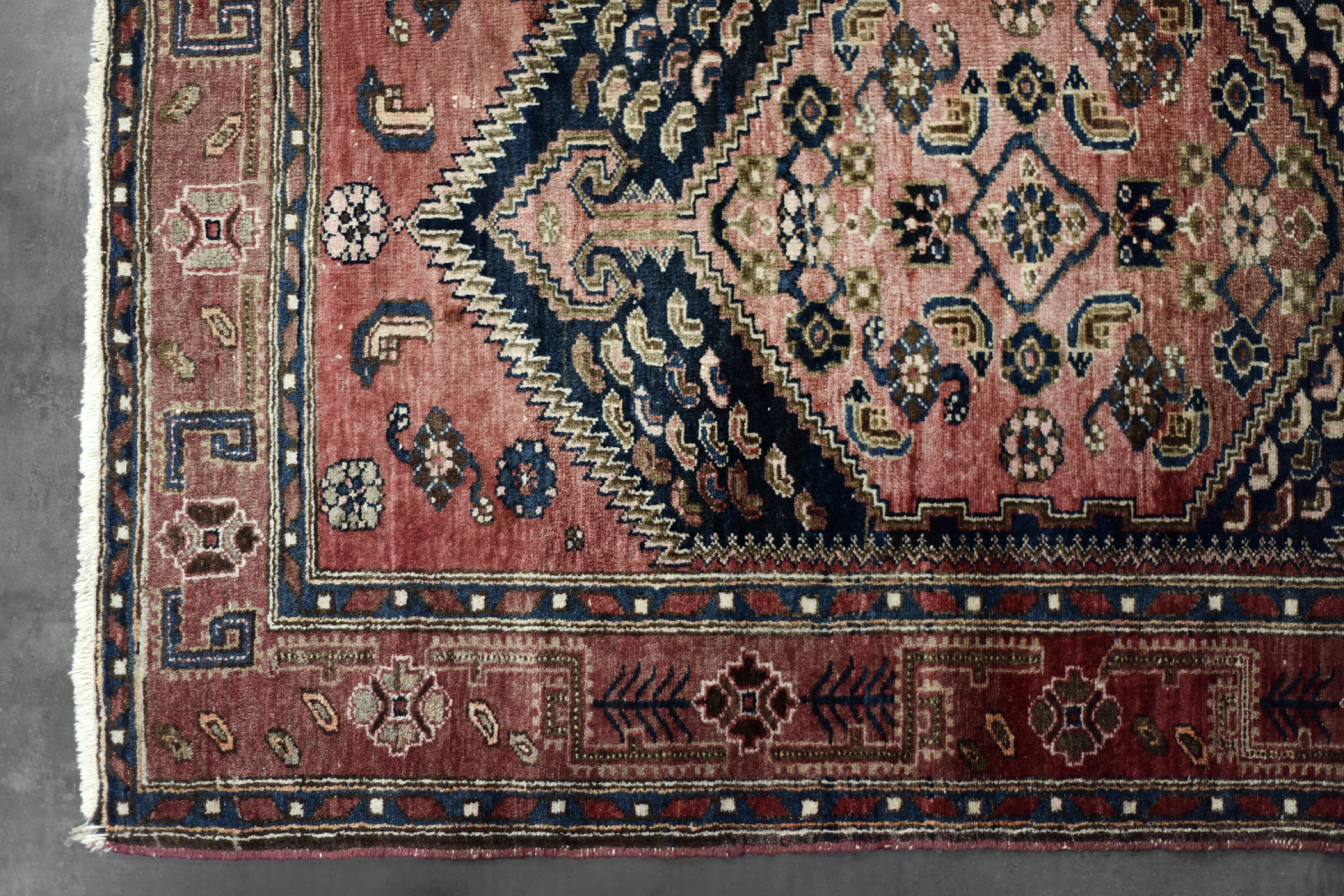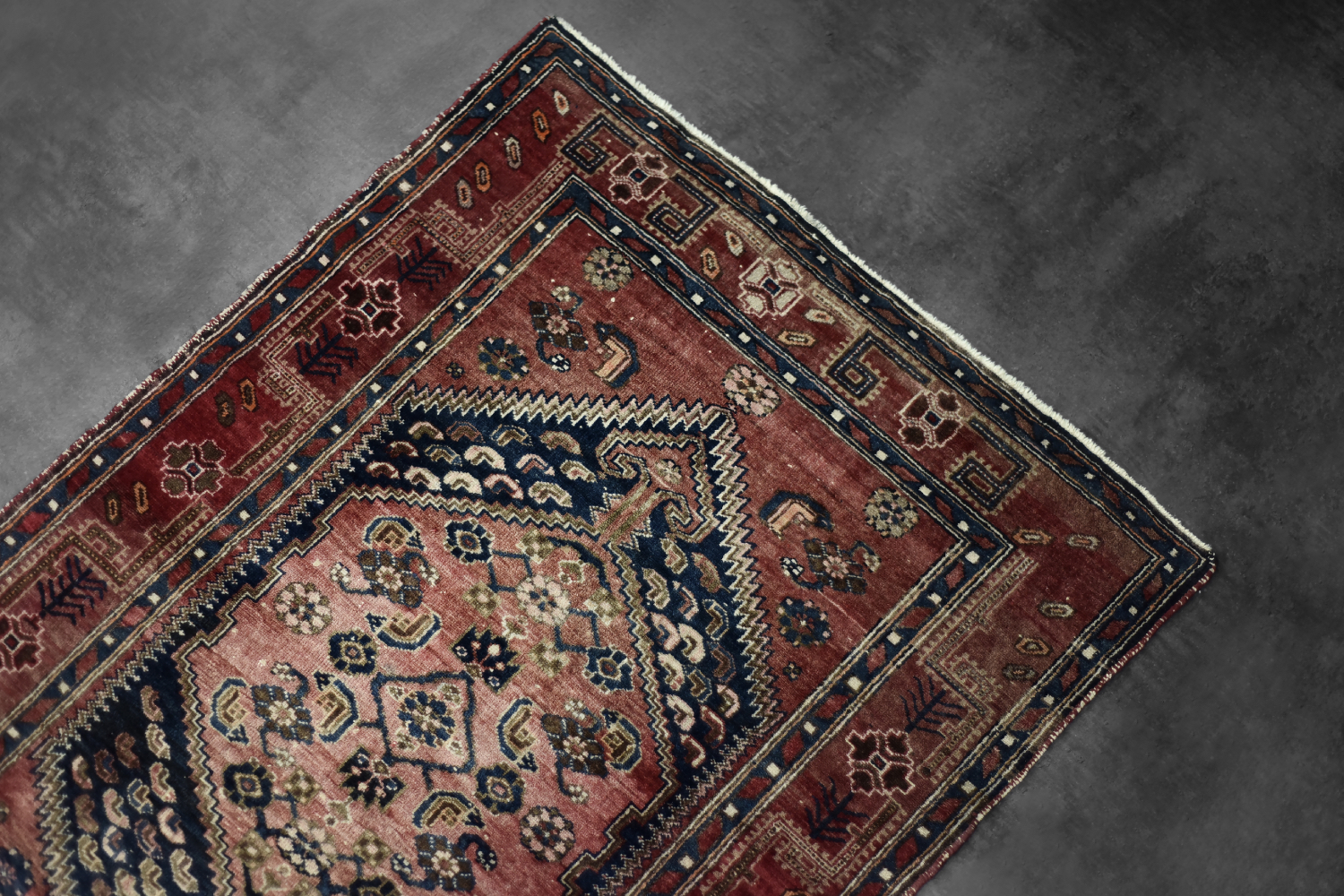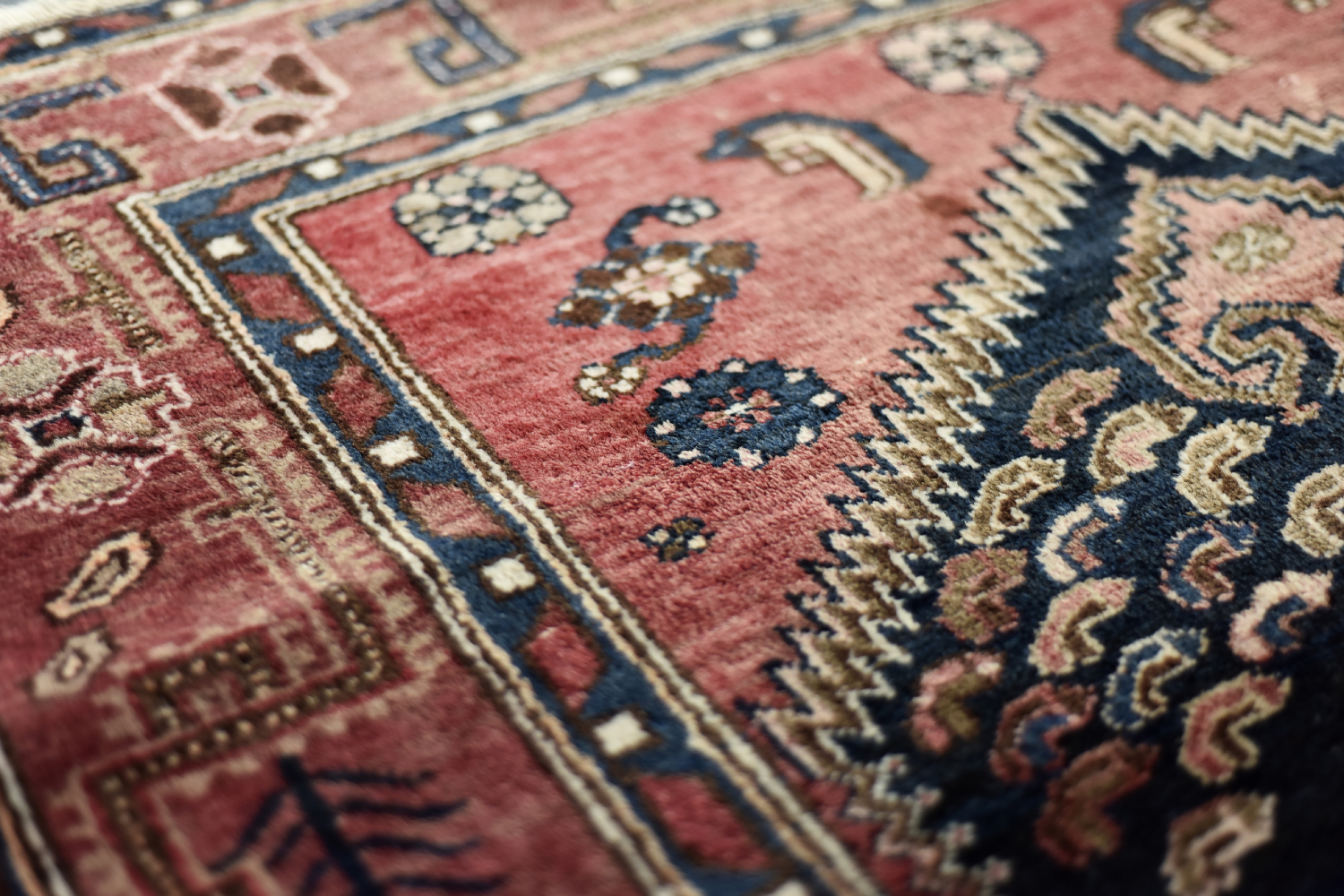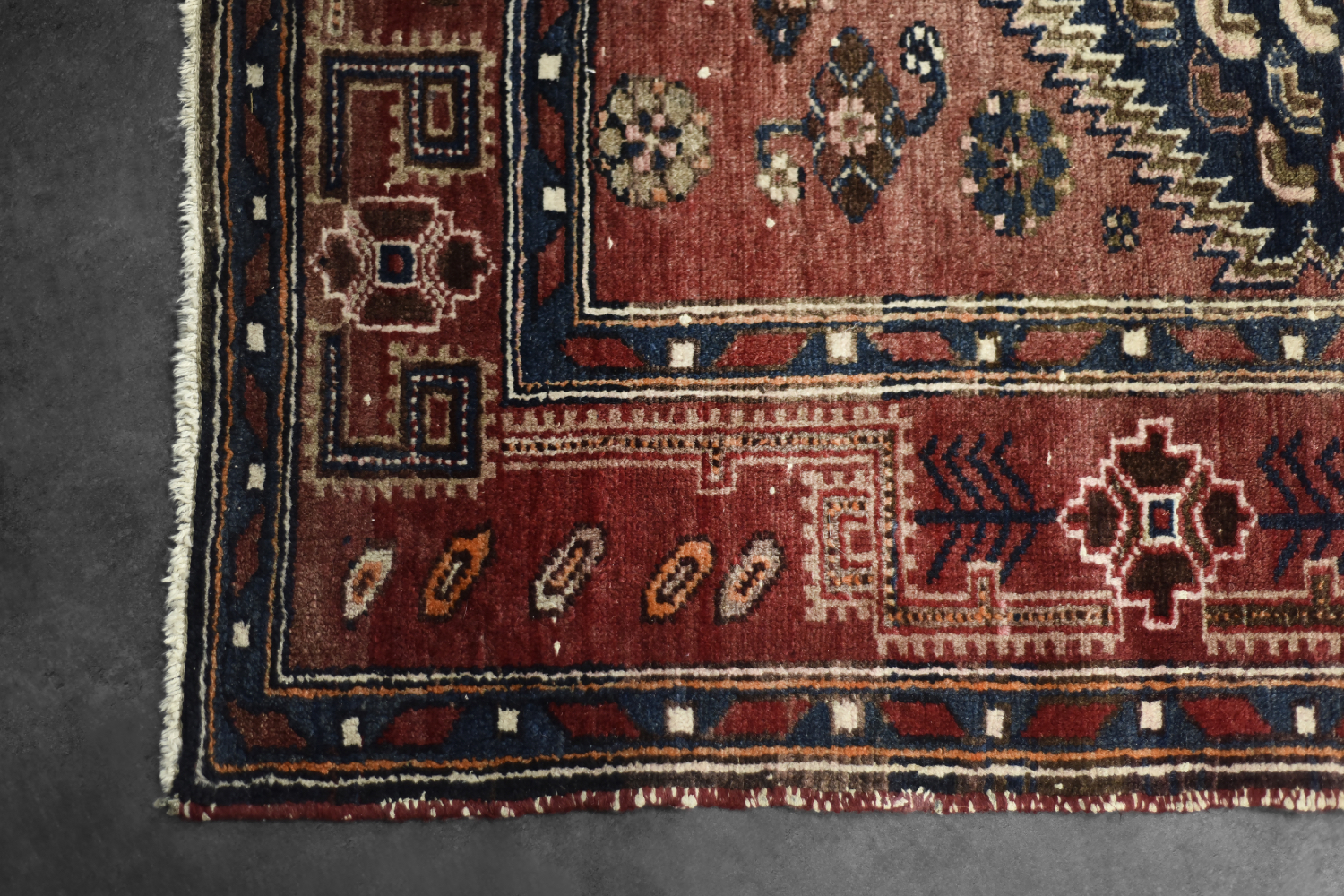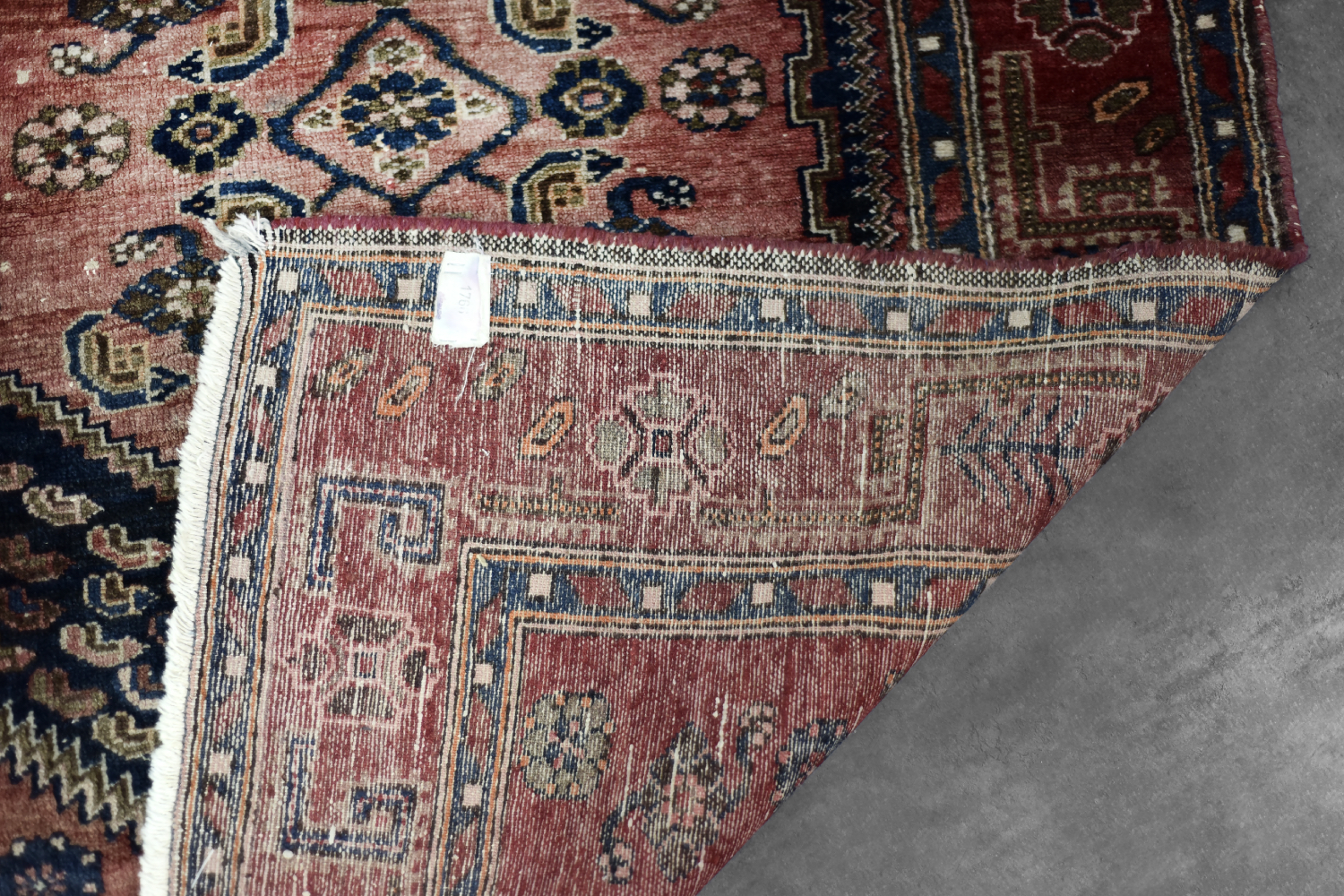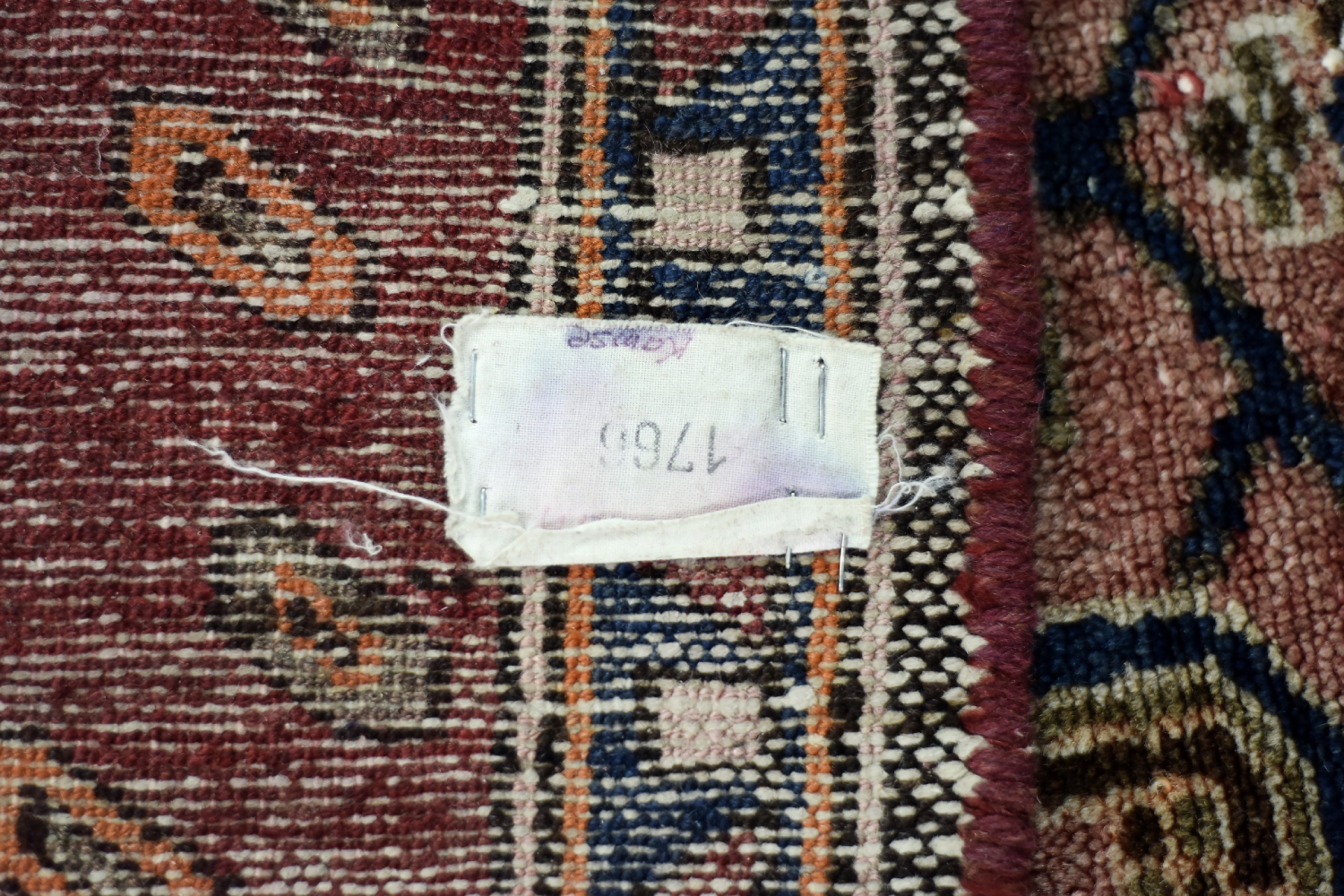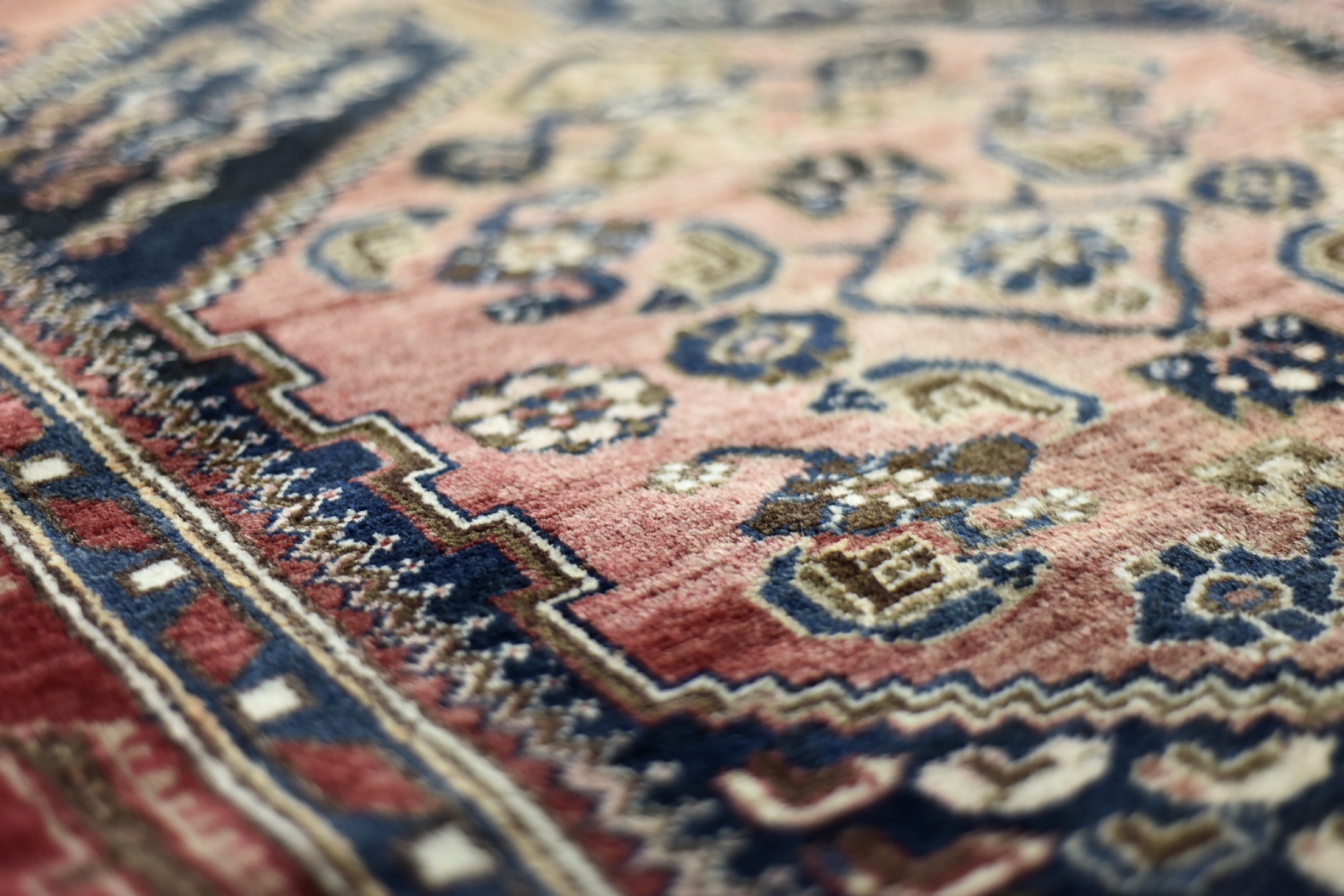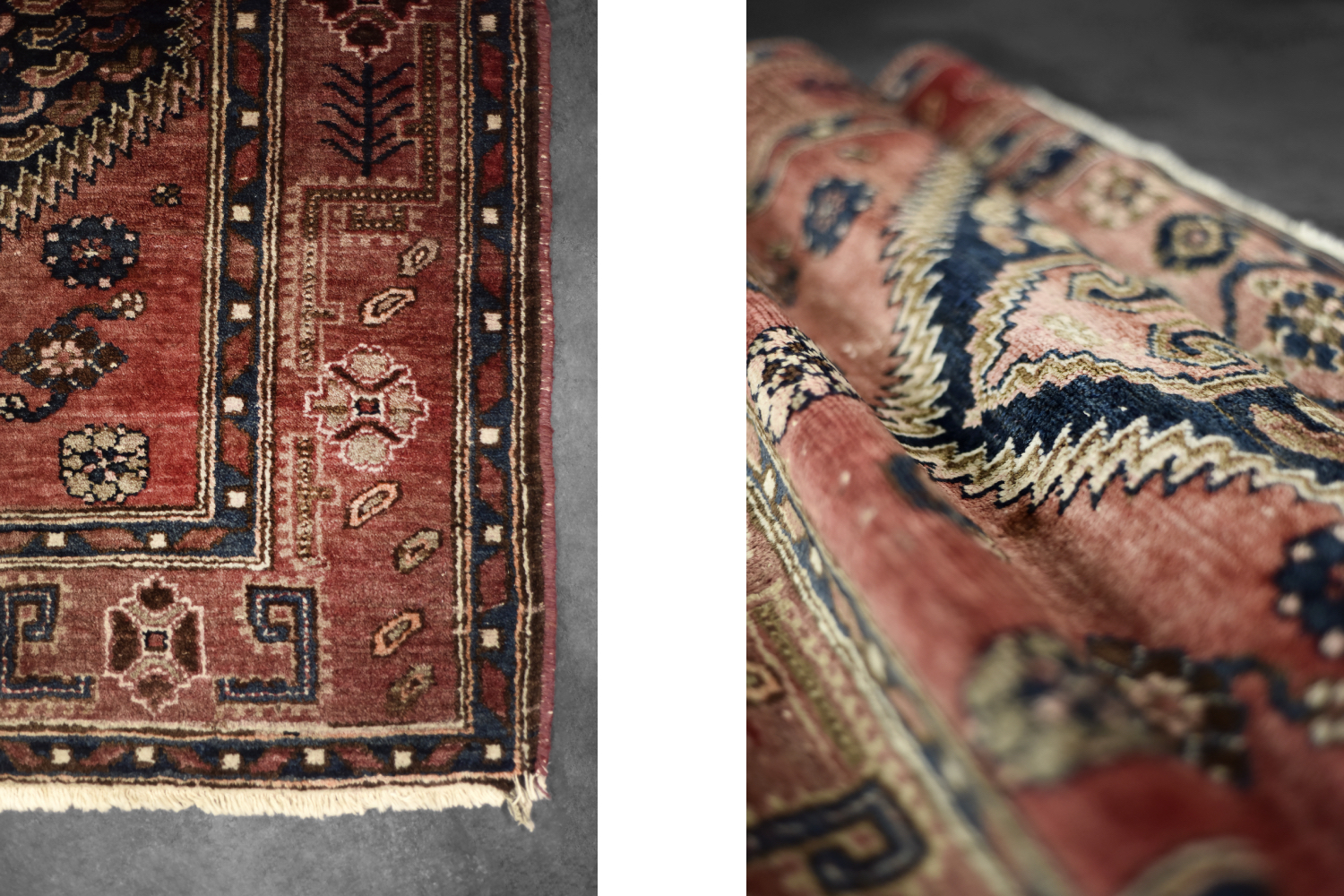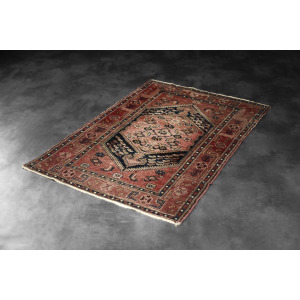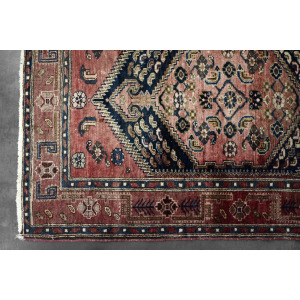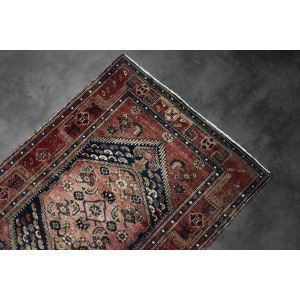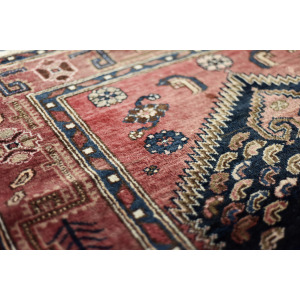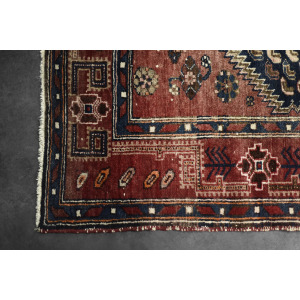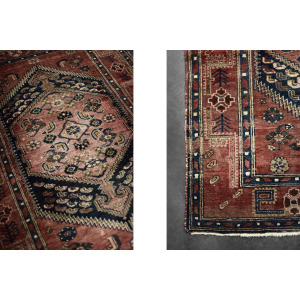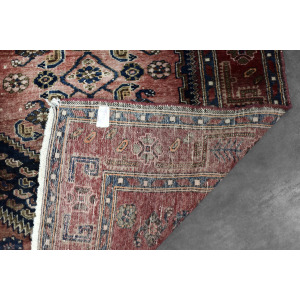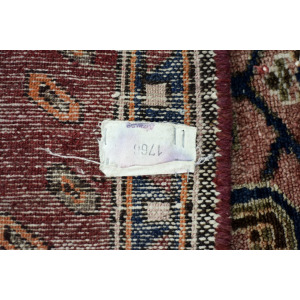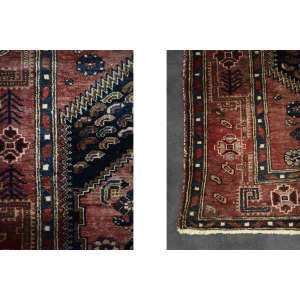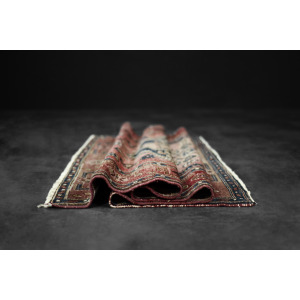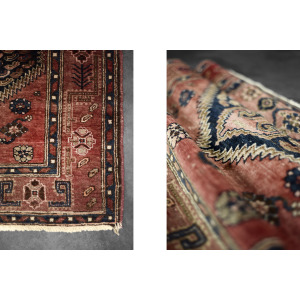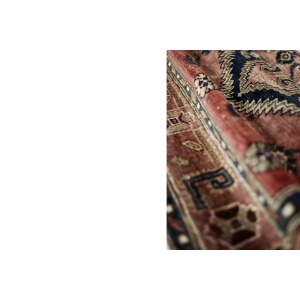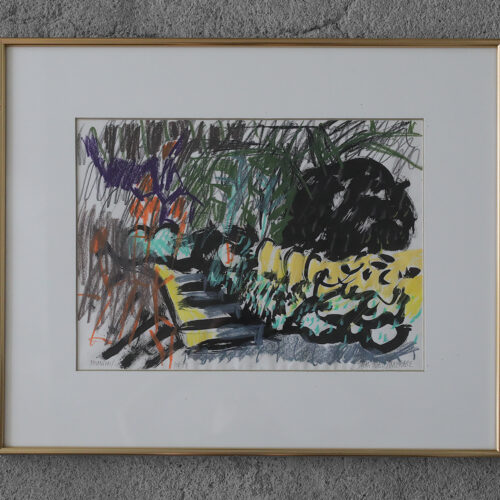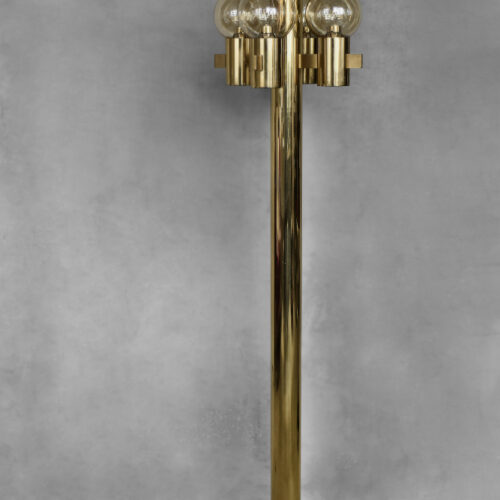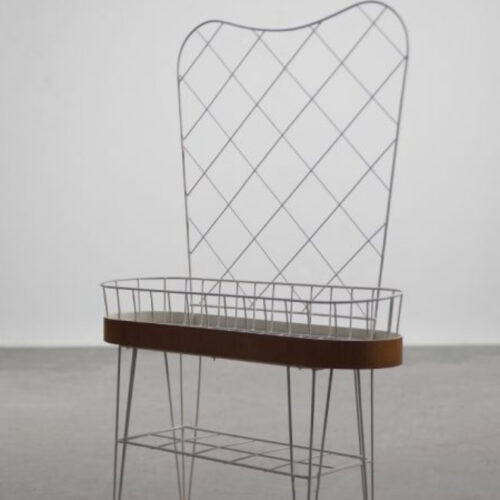Follow Hunt Vintage
Vintage Hand-Woven Middle Eastern Oriental Hamadan Kamse Rug, 1960s
Delivering from: Warsaw, Poland
£945
- Tree planted with your order
- Secure Payment
- Excellent customer service
- Buyer Protection
- 14-day return guarantee
This Western Persian hand-woven rug comes from the Hamadan region of Iran, on the outskirts of the Kamse. Dating from the 1960s, it is densely woven from locally sourced, pure wool pile. The rug is naturally dyed in jewel tones of rustic red and indigo with accents of turquoise and coral. The center of the rug is a large, single medallion. The rug is traditionally flat-woven.
Hamadan rugs are traditionally hand-woven rugs. This region is one of the oldest centers of rug weaving in the world and includes many villages and towns, each with its own unique patterns and styles. The different types of rugs made in Iran are most often named after the regions and towns where they are produced, such as Hamadan, Kerman, or Shiraz, or after the nomadic tribes that produce them. They most often feature central medallions, geometric motifs, and floral motifs. These patterns are usually symmetrical. Some elements are more abstract, while others are inspired by traditional Persian motifs. Typical colours used in Hamadan rugs are reds, navy blues, shades of blue, brown, beige and ivory. The colours are usually vivid and intense, obtained from natural plant and mineral dyes. The rugs are hand-woven from wool, often on a cotton warp, which makes them durable and resistant to wear. These rugs usually have a medium knot density, which gives them a solid structure. The asymmetrical Persian knot is often used, which allows for greater precision and detail in the pattern. Hamadan rugs combine traditional craftsmanship with functionality, being both a beautiful decorative element and a practical addition to the interior. They are evidence of the rich history and culture of the region from which they come. Hamadan rugs are popular both locally and internationally, appreciated for their durability, aesthetics and variety of designs. The traditional art of weaving Persian rugs is a national cultural heritage of Iran. In 2010, the art of weaving carpets from Fars and Kashan were included in the UNESCO Intangible Cultural Heritage List. They are often chosen for both traditional and modern interiors.
The carpet is in original vintage condition. It has signs of wear related to age, minor damage to the fleece. Before shipping, the carpet will be professionally cleaned and will be ready for use.
| Dimensions | 186 × 128 × 1 cm |
|---|---|
| Color | |
| Condition | |
| Item Location | |
| Material | |
| Origin | Iran |
| Period | |
| Style |

GARAGE GARAGE
WEIMAR, 1919, VIENNA, THE ‘30S. MICHIGAN, THE ‘60S. COPENHAGEN, 1963. OUR STUDIO PROVIDES YOU WITH A TRAVEL AROUND THE WORLD. THIS PLACE IS CREATED OUT OF THE FURNITURE PASSION, THE NEED FOR BEAUTY AND CURIOSITY ABOUT INDUSTRIAL DESIGN, STILL NOT ENOUGH APPRECIATED. SINCE 2010 WE’VE BEEN ENLARGING OUR COLLECTION OF UNUSUAL OBJECTS, THE MOST OUTSTANDING FORMS IN THE HISTORY OF DESIGN, WHICH WERE CREATED IN THE YEARS 1900-1990, WITH FEW EXCEPTIONS.
Shipping Policy
Free collection is available.
Depending on your location, this item may be subject to import duties/tax. Please contact the seller for more information.
